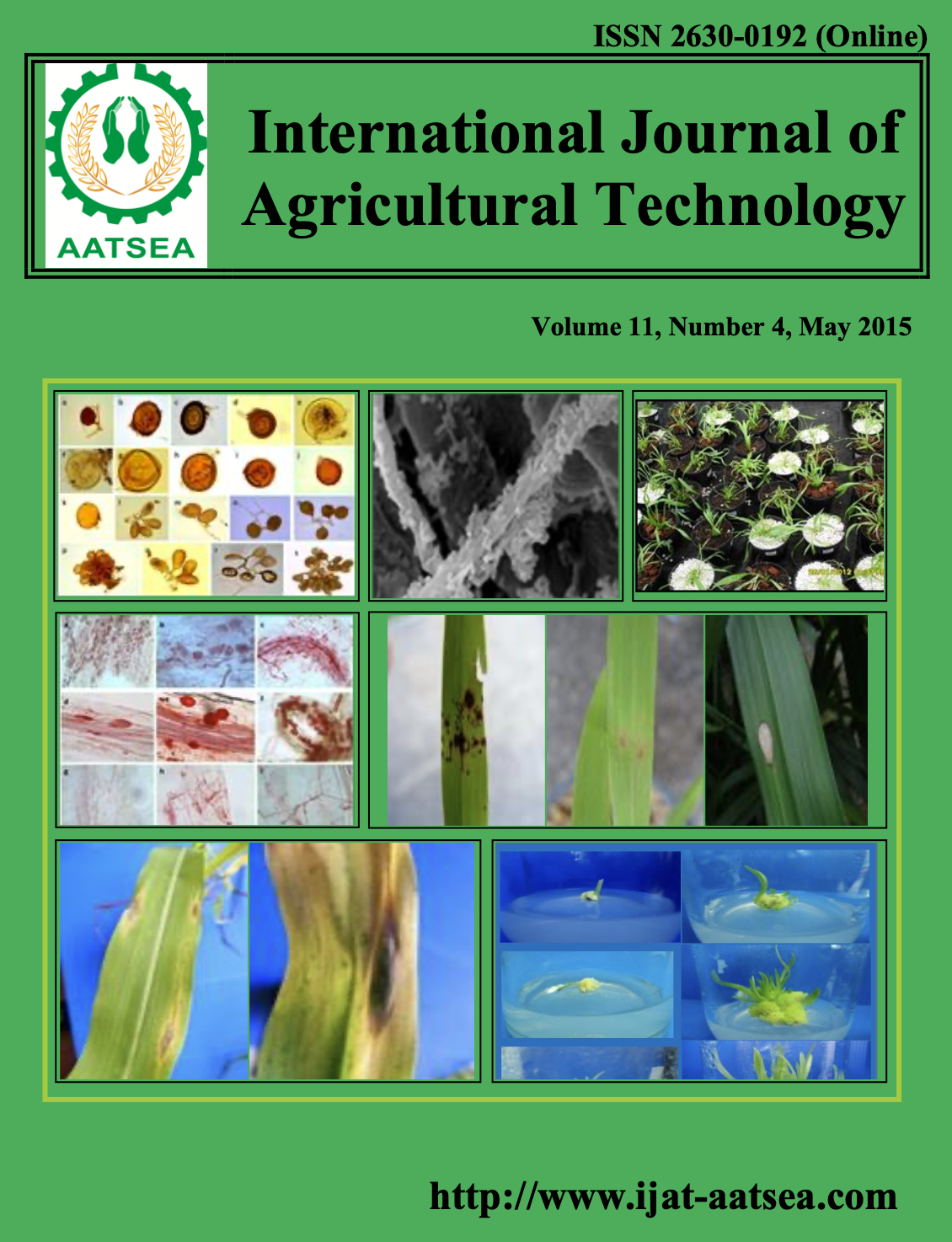Effect of different factors on sporulation of Colletotrichum coffeanum
Main Article Content
Abstract
Article Details

This work is licensed under a Creative Commons Attribution-NonCommercial-NoDerivatives 4.0 International License.
References
Ajith, P. S. and Lakshmidevi, N. (2010). Effect of volatile and non-volatile compounds from Trichoderma spp. against Colletotrichum capsici incitant of Anthracnose on Bell peppers. Nature and Science 8.
Anderson, J. G. and Smith, J. E. (1971). The production of conidiophores and conidia by newly germinated conidia of Aspergillus niger (microcycle conidiation). Journal of General Microbiology 69:185-197.
Anderson, J. G. and Smith, J. E. (1972). The effect of elevated temperature on spore swelling and germination in Aspergillus niger. Journal of General Microbiology 18:289-297.
Boosalis, M. G. (1962). Precocious sporulation and longevity of conidia of Helminthosporium sativum in soil. Phytopathology 52:1172-1177.
Brooklyn Botanic Garden (2000). Natural disease control: A common-sense approach to plant first aid. Handbook. Washington Avenue, Brooklyn, NY: Brooklyn Botanic Garden, Inc. 1000.
Mangenot, F. and Reisinger, O. (1976). Form and function of conidia as related to their development. In Weber, D.J. and Hess, W.H. (Eds.), The fungal spore: form and function. New York: John Wiley and Sons, Inc. pp. 789-847.
Park, D. and Bashi, E. (1970). Gemination studies with Geotrichun candidun. Transactions of the British Mycological Society 53:83-92.
Rotem, J. and Bashi, E. (1969). Induction of sporulation of Alternaria porri f.sp. solani by inhibition of its vegetative development. Transactions of the British Mycological Society 53:433-439.
Sekiguchi, J., Gaucher, G. M. and Costerton, J. M. (1975). Mocrocycle conidiation in Percillum urticae: an ulteastructural investigation of spherical spore growth. Canadian Journal of Microbiology 21:2048-2058.
Smith, J. G., Anderson, J. G., Deans, S. G. and Berry, D. R. (1981). Biochemistry of microcycle conidition. In Cole, G.T. and Kendrick, B. (Eds.), Biology of conidia fungi, vol 2. New York: Academic Press Inc. pp. 329-356.
Vilavong, S. and Soytong, K. (2013). Plant pathogenic fungi and pathogenicity test on Arabica coffee plantation at Paksong in Lao PDR and preliminary biocontrol test in vitro. ICIST 2013, KMITL, Bangkok, Thailand, 28-29 November 2013. pp. 56-92.
Frey, R. J. (2003). Caffeine-related disorders. Gale Encyclopedia of Mental Disorders. Retrieved from http://www.encyclopedia.com/doc/1G2-3405700066.html.


